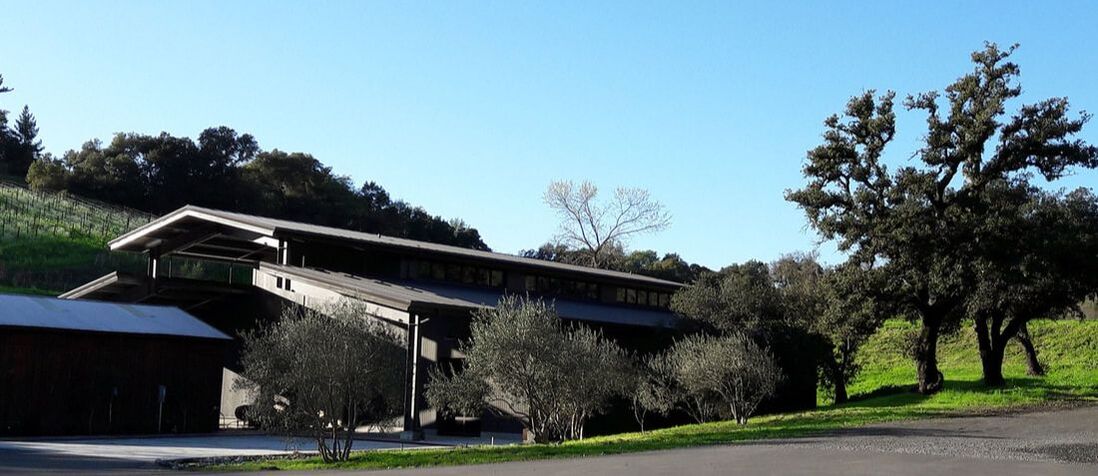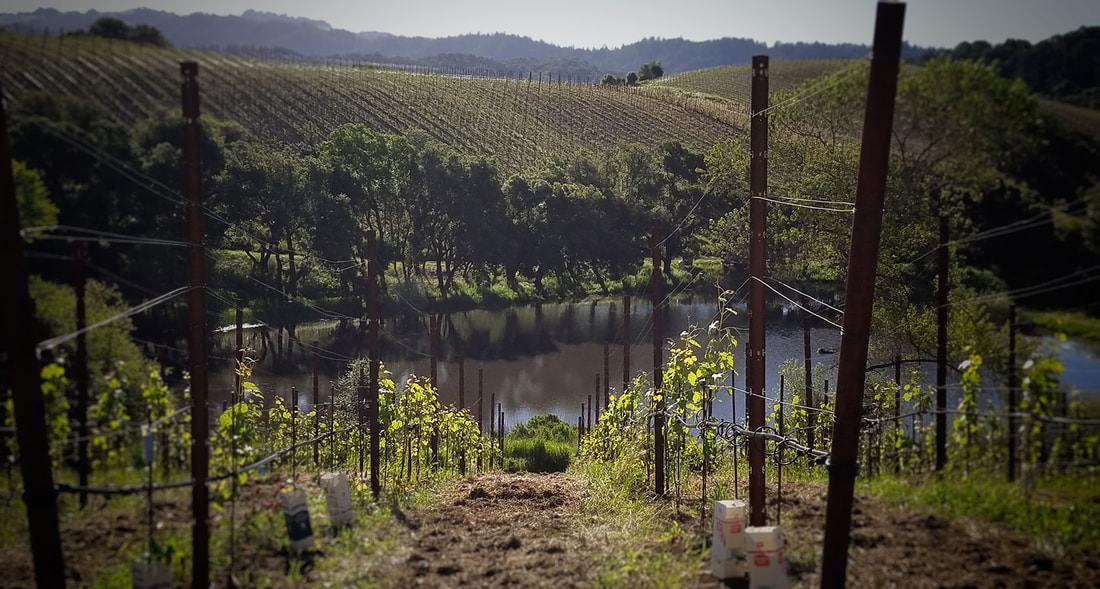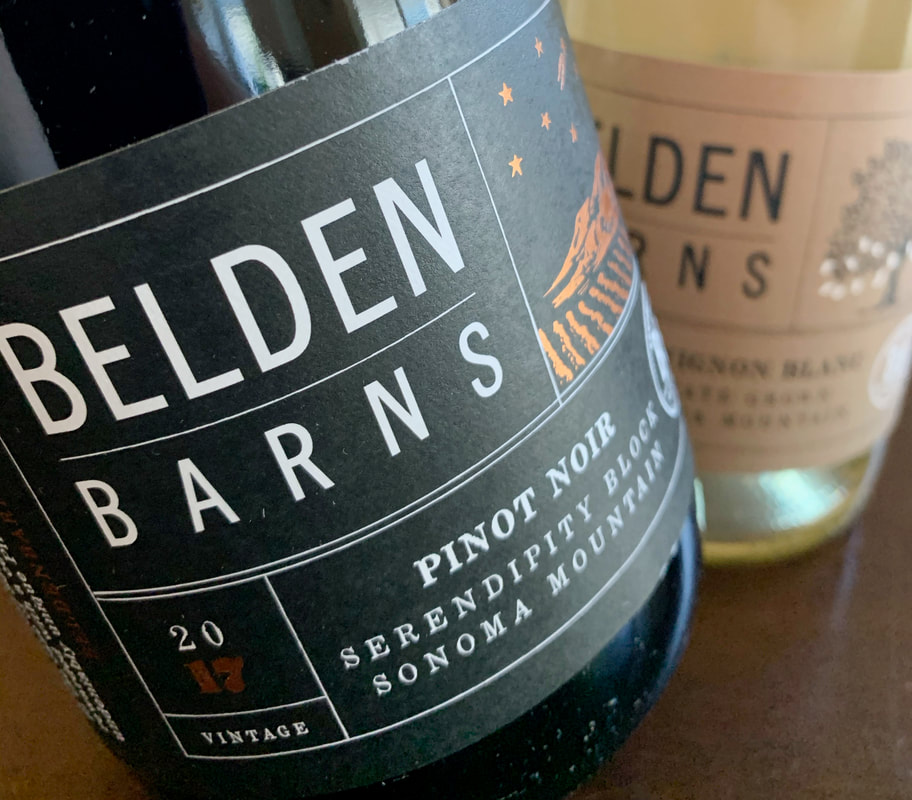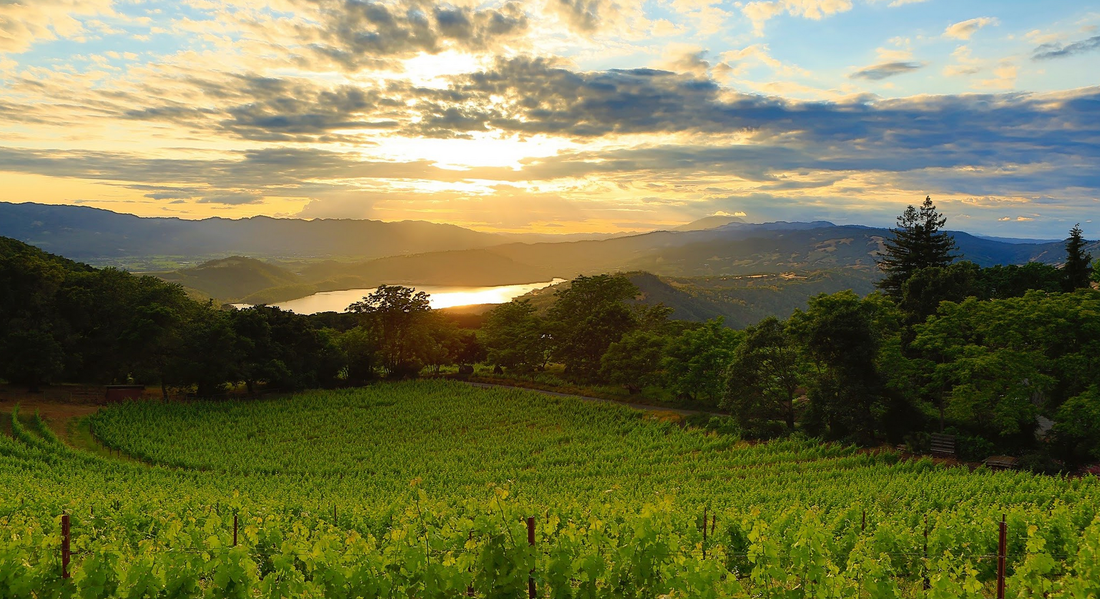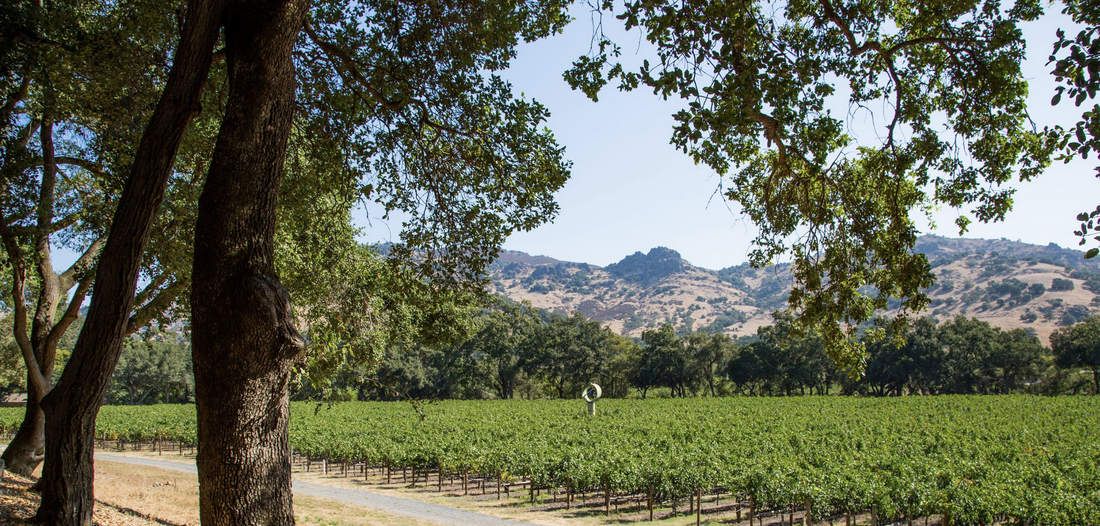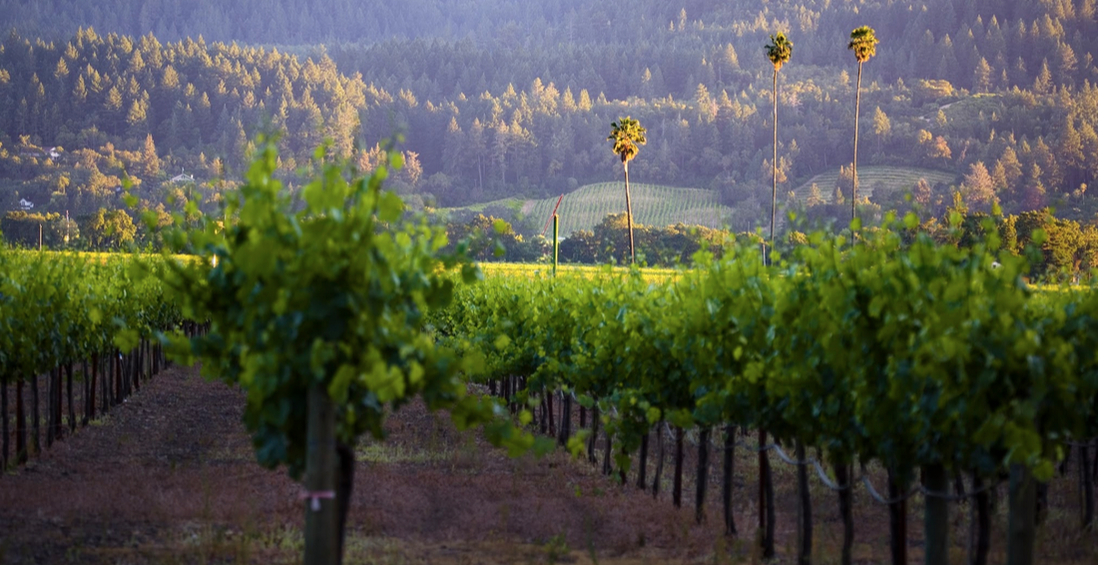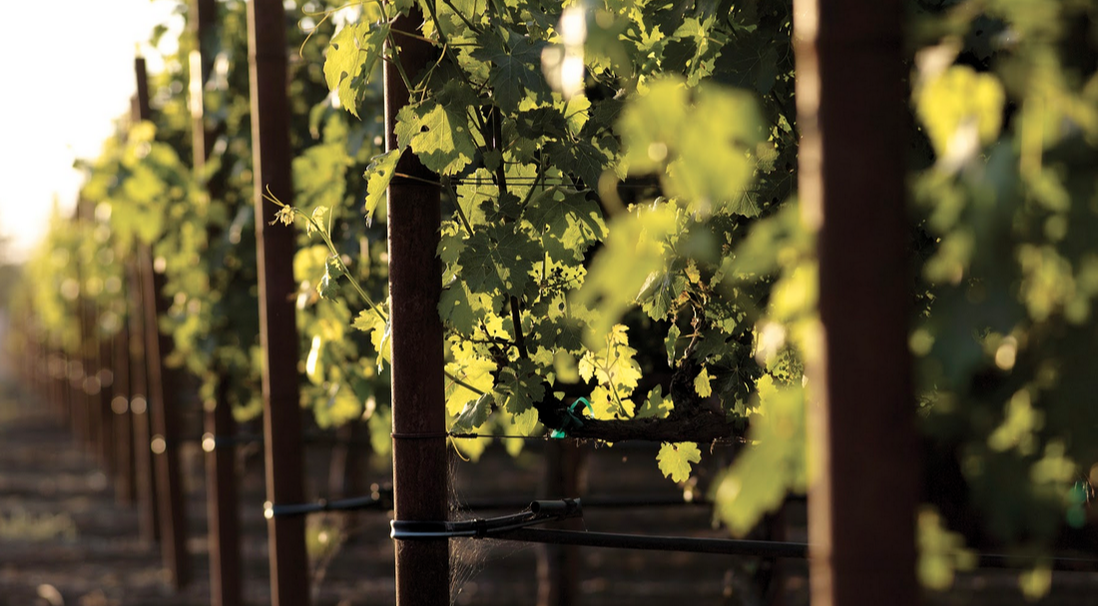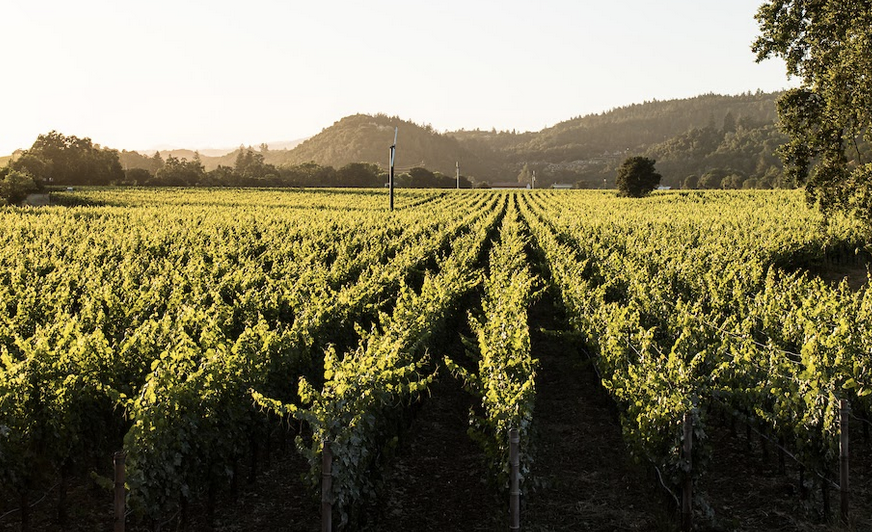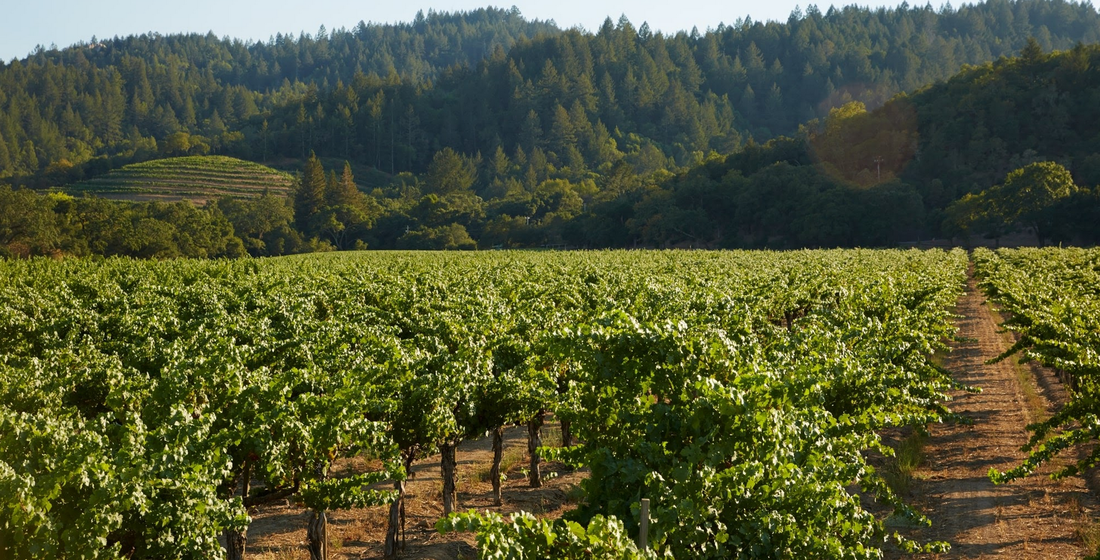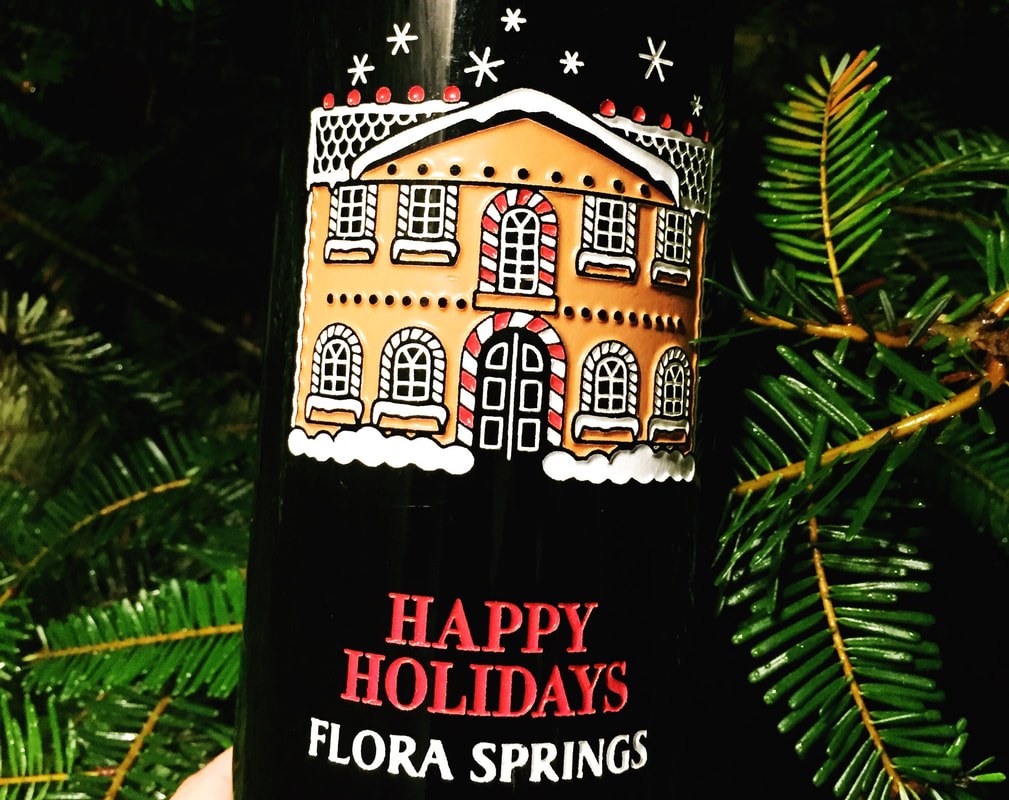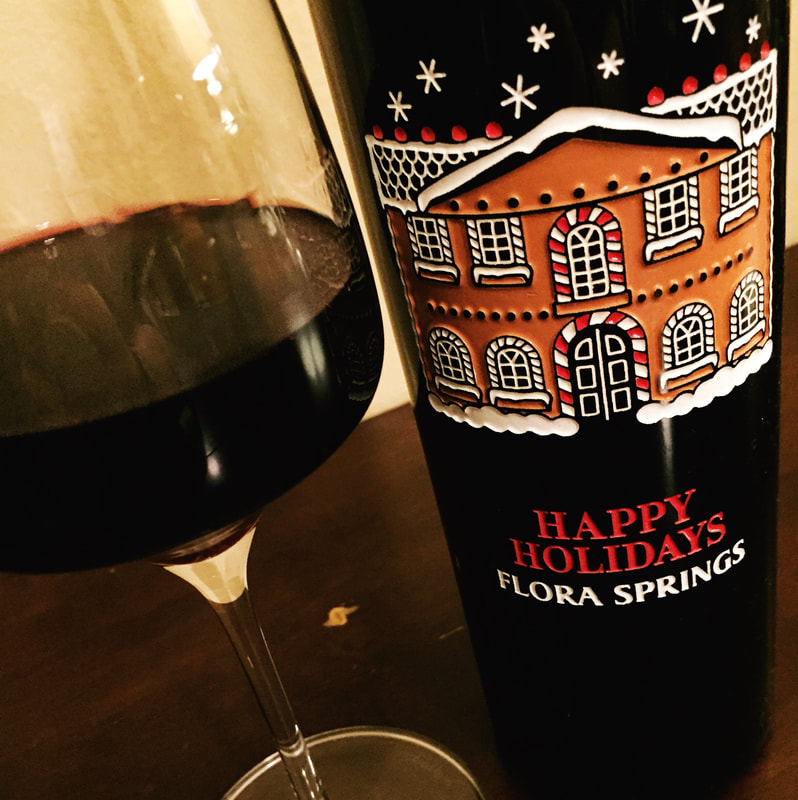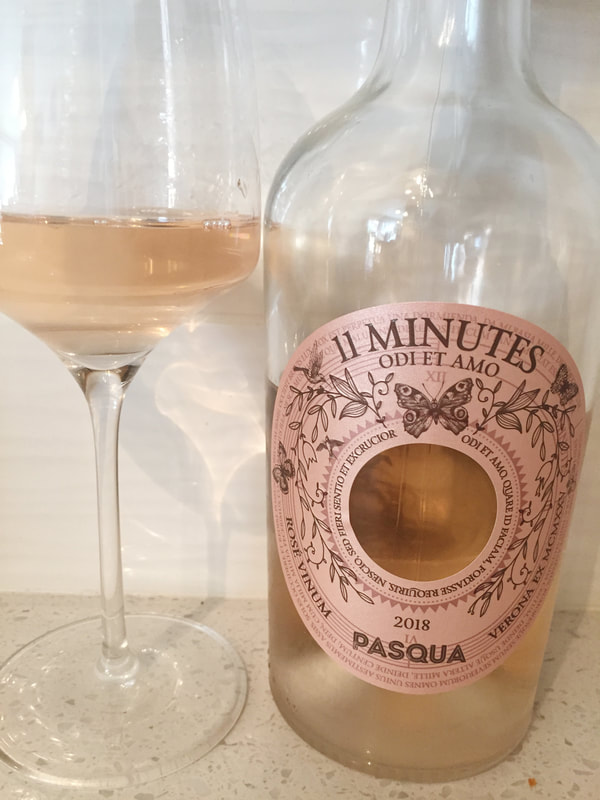|
Renowned French winery proprietors, Gonzague Lurton and Claire Villars-Lurton, have outdone themselves with ACAIBO in Sonoma County. Gonzague and Claire Lurton both come from families deeply connected to the wine industry in Bordeaux, France. Over the decades, the Lurton family has acquired more than a dozen prestigious Bordeaux estates. And the Villars oversee four distinguished estates. Combined, the couple brings a wealth of knowledge, experience, and passion to the Sonoma County wine scene. True to their French roots, their estate vineyards are farmed in an Old World style that honors and respects the land. Sustainable and organic farming practices, in addition to some biodynamic principles, guide their viticulture. Trinité Estate, the name of their 24-acre vineyard, is located along Chalk Hill Road. The sloped site has some modest elevation at 750 feet, with the Russian River flanking its west side and Alexander Valley and Knights Valley AVAs bordering its eastern edge. It is here in the Chalk Hill AVA that they grow the classic Bordeaux varieties of Cabernet Sauvignon, Merlot, and Cabernet Franc. Early-morning picks by hand and hand-sorting are two guiding harvest principles that allow ACAIBO to have so much concentration and quality in the wine. Harvest is followed by stainless steel fermentation, malolactic fermentation, and 12-18 months of aging in French oak barrels. This traditional and minimalist approach during harvest season and winemaking craft a wine with genuine character. 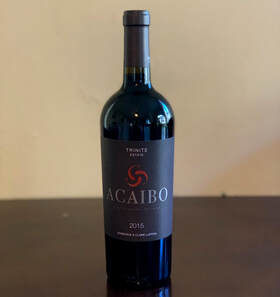 The 2015 ACAIBO is a wine reminiscent of classic Bordeaux, while still expressing its California heritage. A bountiful bouquet of black cherry cola, warm cranberry compote, cured meats, and fresh tobacco leaf grace the nose of this immediately aromatic wine. Crafted from Cabernet Sauvignon, Merlot, and Cabernet Franc, the palate shows approachable tannins, fresh acidity, and layers of structure. The wine’s profile is refined and balanced, with subtle notes of blueberry and cocoa—boasting more texture, body, and complexity than fruit. The 70% new French oak is integrated beautifully, and the wine drinks closer to that of a French Bordeaux than what some might call a “big, California Cab.” This Cabernet-dominant blend is big in personality, but not in alcohol or overripeness. It’s smooth with a lingering and seductive finish. With Christmas just around the corner, I can easily see this wine complete a wonderful dinner pairing. The 2015 ACAIBO will couple up nicely with a classic Beef Wellington or a hearty Prime Rib Roast. Happy Holidays!
0 Comments
The holiday season is upon us, and while Thanksgiving is going to look a bit different this year, there is one thing that remains: great wine on the dinner table. Now more than ever, it is critical to support local wineries and pair your Thanksgiving feast with vino crafted by our fellow community members. In addition to the restrictions posed on wineries because of Covid, California is also coming off the tails of a historic fire season that once again affected Sonoma County. Please remember that every dollar spent on local wine supports our industry and the families that are committed to keeping our wine region thriving and our glasses full of holiday cheer.
It is with great pleasure that I recommend inviting the Beldens to your Thanksgiving table. Belden Barns is located on the iconic Sonoma Mountain and has a long history of farming and hospitality that dates back to the 1800s. The incredible estate is home to an interconnected and flourishing ecosystem of fruits, vegetables and vineyards, and they have their sights on bringing livestock to the land soon. Throughout the year, the family harvests produce from their bountiful farm to package farmstead goods, such as polenta, popcorn, and a variety of beans. And their estate vines craft a collection of palate-pleasing wines that features unique and classic varietals. Grüner Veltliner and Grenache are two varietals not commonly grown in Sonoma County, but the terroir of the Belden Barns Estate vineyard on Sonoma Mountain produces lovely expressions of these grapes. And in fact, Belden Barns’ 2018 Estate Grüner Veltliner is the first and only estate Grüner Veltliner in Sonoma County, making this wine a rare treat. Pair this exclusive wine with turkey day hors d'oeuvres like Root Vegetable Crostini. For a more classic approach, look no further than the 2019 Estate Sauvignon Blanc and 2017 Serendipity Pinot Noir for quintessential Thanksgiving pairings. While it’s hard to resist finishing a bottle of Sauvignon Blanc pre-meal, I recommend saving enough for dinner as well—or better yet, grab two bottles so that there is plenty to go around. The 2019 Estate Sauvignon Blanc from Belden Barns boasts a juicy, opulent palate with ripe tropical fruit like pineapple and lychee. Made in a rich but very balanced style, this wine is loaded with texture and complexity, making it a playful pick for Thanksgiving mains like turkey, mashed potatoes, and green beans. Are you still looking for your ideal turkey recipe? My family loves the Perfect Roast Turkey 101 recipe from Martha Stewart. The 2017 Serendipity Pinot Noir is made naturally and with a Burgundian flare. A who’s who of Pinot clones (including, Swan, Pommard, Calera, and more) makes up this small lot wine of only 335 cases. This Pinot Noir possesses mixed fruit flavors with a broody earthiness that reminds me of aged Burgundy. Black cherry, cranberry, and wild strawberry balanced with black tea, cardamom, and forest floor make this a sophisticated Pinot fit for turkey, homemade stuffing with deep flavor (see recipe below), and pumpkin pie. So, don’t forget—even though we may not be gathering with family or friends this Thanksgiving, we can still support our local community and spread the love. Make Sonoma County wines the centerpiece of your Thanksgiving dinner this year. Homemade Stovetop Stuffing Ingredients
What’s in a Name? In Napa Valley and beyond, there are hundreds of well-known vineyards with reputations for producing the very best wine in the world. In Europe, classification systems and designations mark the greatness of a vineyard site and its wine. But in Napa Valley, greatness is designated by taste and reputation. There is no doubt that Napa Valley produces some of the world’s best wine, and despite the fact that vineyard greatness is not demarcated by a legal system, there are widely recognized “Grand Cru” vineyard sites across the Valley. Here are some of our favorite, standout vineyards—and their respective wineries and the wines they produce—that should absolutely be on your 2020 wine bucket-list. FAY Vineyard, Stag’s Leap Wine Cellars The FAY Vineyard was the very first planting of Cabernet Sauvignon in what is now the Stags Leap District AVA. This vineyard has earned great acclaim for its renowned winery—Stag’s Leap Wine Cellars. The vineyard is composed of fine Bale gravelly clay loam and volcanic, alluvial soils, yielding a softer side of Cabernet that brings forward perfumed aromatics and berry qualities on the palate. Characterizing a classic expression of Napa Valley Cabernet, the 2016 FAY Vineyard Cabernet Sauvignon is all-at-once powerful and inviting. It shows an aromatic bouquet of alluring ripe raspberry, blueberry and baking spice aromas, while the palate grabs a hold of you with its with blueberry, blackberry and cassis notes, satin texture and softly finessed structure. While each vintage from this site carries its own distinct qualities, voluptuousness is a trait that traces itself through this delicate yet powerful wine, year after year. Three Palms Vineyard, Duckhorn Vineyards Located in Napa Valley’s Calistoga AVA at 375-foot elevation, Duckhorn Vineyards’ Three Palms Vineyard has become a benchmark site for Bordeaux varietals, and is most known for their Merlot bottling. A unique composition of lean soils—including bale loam, Cortina stony loam, bale clay loam and river wash—contribute to the finished wine’s distinct qualities. The 2016 Three Palms Vineyard Merlot is a classic representation of its vineyard site, with its warmer climate covered in volcanic stones. The 2016 Three Palms Vineyard Merlot is a stunning wine that boasts aromas of plum, wild cherry, cinnamon and a distinctly soft floral note; layers of baking chocolate and vanilla linger beneath. The palate is smooth and inviting, with round features and full-bodied flavors of blueberry, spiced Christmas cake, figs and a subtle hint of stony minerality. A revered Merlot, this current vintage lives up to all expectations and proudly stands tall as a single varietal Napa Valley Merlot. Central Park West Vineyard, Trinchero Napa Valley Paying homage to the Trinchero family’s New York City origins, the Central Park West Vineyard calls the St. Helena AVA its home. This vineyard site is characteristically warm with excellent sun exposure on the valley floor, and is made up of deep, loamy soils. Wine crafted from this vineyard is produced in limited quantities. Located in the St. Helena AVA, the Central Park West Vineyard is a sunny site with one of the warmest climates in Napa Valley, producing a Cabernet with dark and savory aromas of blueberry, sweet tobacco leaf and cedar. On the palate, the 2014 Central Park West Cabernet Sauvignon is full-bodied and silky smooth, with ripe berry fruit and flavors of vanilla, baking spice and sweet tobacco leaf. Trailside Vineyard, Heitz Cellar Heitz Cellar’s Trailside Vineyard is another iconic Napa Valley site. This historic winery has legendary status, as its pioneering vintner Joe Heitz crafted Napa Valley’s first-ever vineyard designated Cabernet Sauvignon in the late 1950s. The 2013 Trailside Vineyard is an incredible combination of sixteen different blocks of Cabernet Sauvignon, planted to seven distinct clones across eight unique soil types. Situated in the Rutherford AVA, this vineyard is known for its impeccable Cabernet growing conditions. The vines are planted at an east to west orientation so that the grapes ripen gradually with dappled sunlight. The result is small, highly concentrated berries that craft an elegant, structured and deeply concentrated wine. This 2013 Trailside Vineyard is a quintessential Cabernet Sauvignon that expresses that earthy quality wine lovers can’t get enough of from Rutherford Cabs. Its bold yet delicate, with smooth tannins and lots of structure. Ripe blackberry, cassis and wild raspberries mix with notes of vanilla, cedar and baking spices. With fruit and savory notes, this Cabernet is a balanced and complex beauty. To Kalon Vineyard, Robert Mondavi Winery Perhaps the most well-known vineyard in Napa Valley, To Kalon rests on the valley floor in the revered Oakville AVA. Well-drained alluvial soils—of gravel, clay loams and bale loams—create an ideal growing condition for Cabernet grapes, sending their roots deep into the soil to seek groundwater. And with the vineyard’s prime location in the center of Napa Valley, the vineyard’s heat is appropriately tempered by the coastal fog that surges through the Valley in the mornings and evenings. Blended from the finest blocks in Mondavi’s To Kalon Vineyard, the 2016 To Kalon Cabernet Sauvignon Reserve embodies the magic of this site. Cassis, black currant and oak spice waft from the glass, while rich layers of blackberry and ripe plum unfold on the palate with notes of vanilla, eucalyptus and oak spice. Complex and powerful, while simultaneously elegant and finessed, this wine is an authentic representation of To Kalon. Hideaway Vineyard, Chappellet
Chappellet’s Hideaway Vineyard is located in Pritchard Hill—a region deemed an unofficial AVA in Napa Valley by critics and wine connoisseurs alike. The Chappellet family pioneered this winegrowing region and continues to make profound wines from their estate vineyards. Geographically speaking, the area is situated due east from the Rutherford and Oakville AVAs. Rocky slopes characterize this unique site with an impressive elevation of 1,425 feet high. The aromas of Chappellet’s 2017 Hideaway Vineyard Cabernet Sauvignon leap from the glass with notes of cassis, blackberry, espresso and bittersweet chocolate; layers of baking spice unfold with each swirl. While seemingly characteristic of mountainous vineyard sites with its strong structure and complexity, the wine is simultaneously soft and sophisticated. Bold berry liqueur flavors are coupled with cassis, vanilla and baking spice. This Cabernet is both a beautiful expression of its distinct site and of the style wine lovers expect from Napa Valley’s more mountainous terroir. *Originally published in Very Napa Valley. ‘Tis the season for festive wine releases like Flora Springs Winery’s 2016 Gingerbread Estate Holiday Red Blend. This is a classic blend of Bordeaux varietals crafted from grapes grown in their estate Rutherford and Oakville vineyards. It’s a seasonal, wine club members only release that comes in a beautifully etched bottle with a colorful Christmas design. The story behind this year's bottle comes from a family holiday tradition, in which Nat Komes—General Manager of this family-owned and operated estate—decorated gingerbread houses with his brother and grandmother Flora.
It boasts aromas of ripe blackberry, cherry kirsch, cola and holiday baking spices. Its strikes an impressive balance on the palate with its firm but approachable tannins, silky and full mouthfeel, and complexity of flavors. Fresh-baked cherry pie, black currant, warm baking spices and a hint of sweet vanilla grace the luscious palate. This exclusive wine comes as an annual release, special for wine club members, and is etched and hand-painted. While the design changes each year, the quality inside never wavers, and wine club members look forward to receiving this one-of-a-kind offering each year. Made in a versatile and food-friendly fashion, it pairs well with holiday meals like honey-roasted ham, buttered turkey, rib roasts and more!
These grapes are grown on the banks of Lake Garda, which is flanked on three sides by different wine-growing regions: Veneto to the east, Lombardy to the west and Trentino-Alto Adige to the north. The grapes are delicately pressed and then see 11 minutes (hence the name) of skin contact to create that perfect pink hue. Fermented in steel tanks and then allowed to remain in contact with the lees for three to four months, this Rosé has just the right brightness and acidity juxtaposed against a creamy mouthfeel and medium body.
Aromas of lime zest, under-ripe strawberry and honeydew mix with wet stone and minerals. On the palate, the 11 Minutes Rosé is smooth and creamy with flavors of minerals, strawberry and a touch of key lime pie; hints of vanilla give it added complexity. The creamy texture is balanced by gentle acidity, making this Rosé a refreshing, lively and enjoyable spring and summer sipper. |
Wine Blog Archives
December 2020
|
